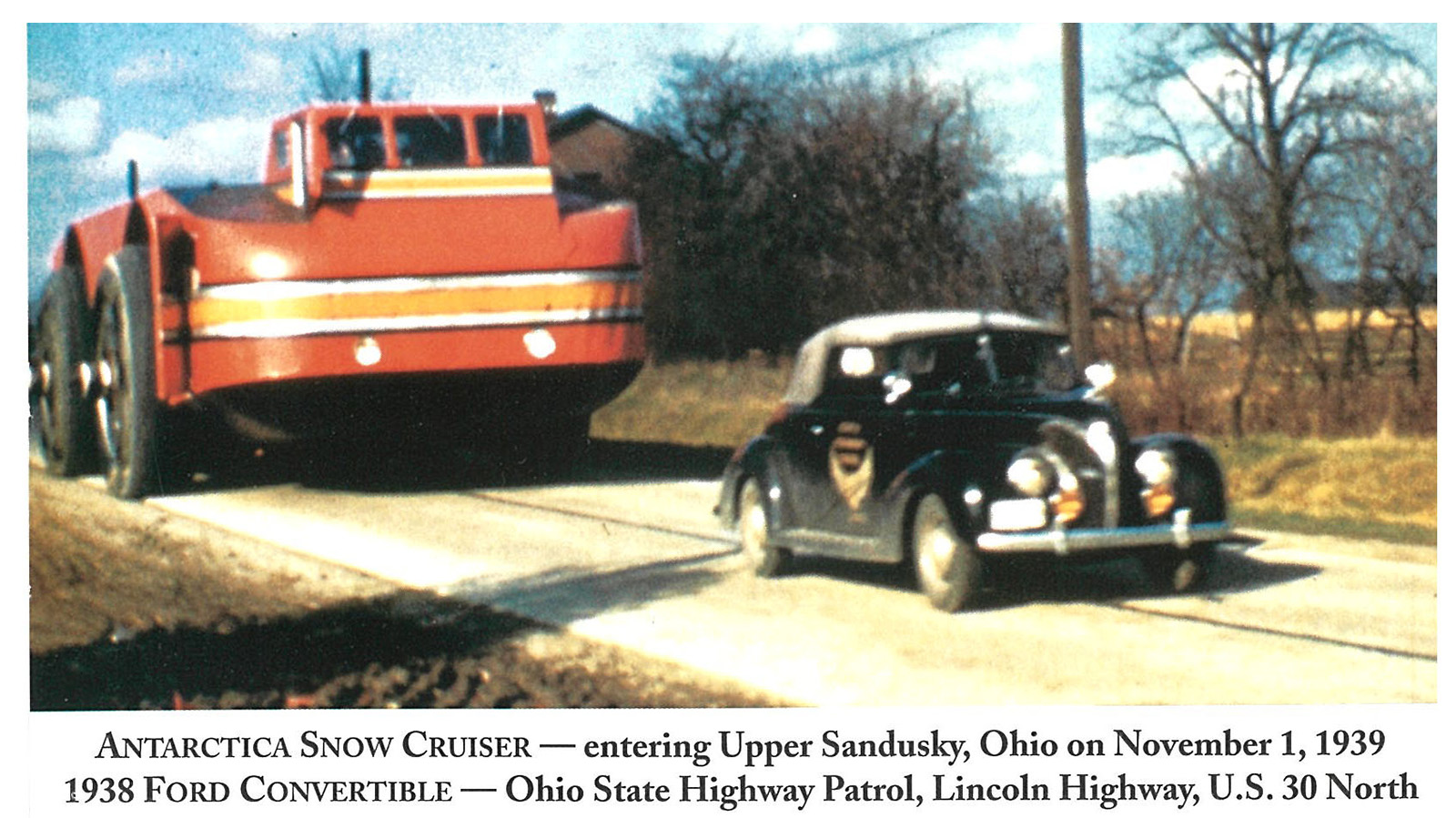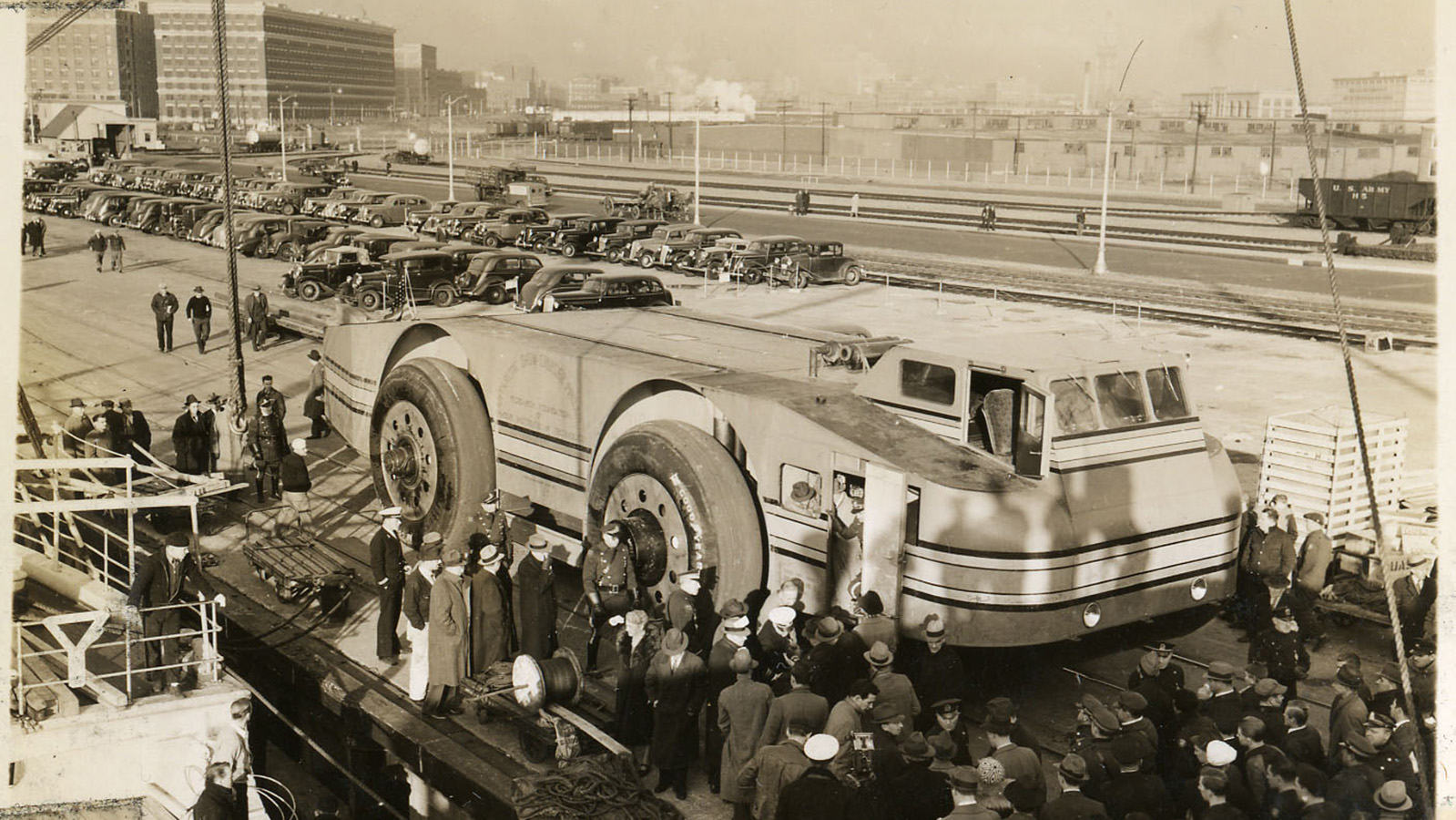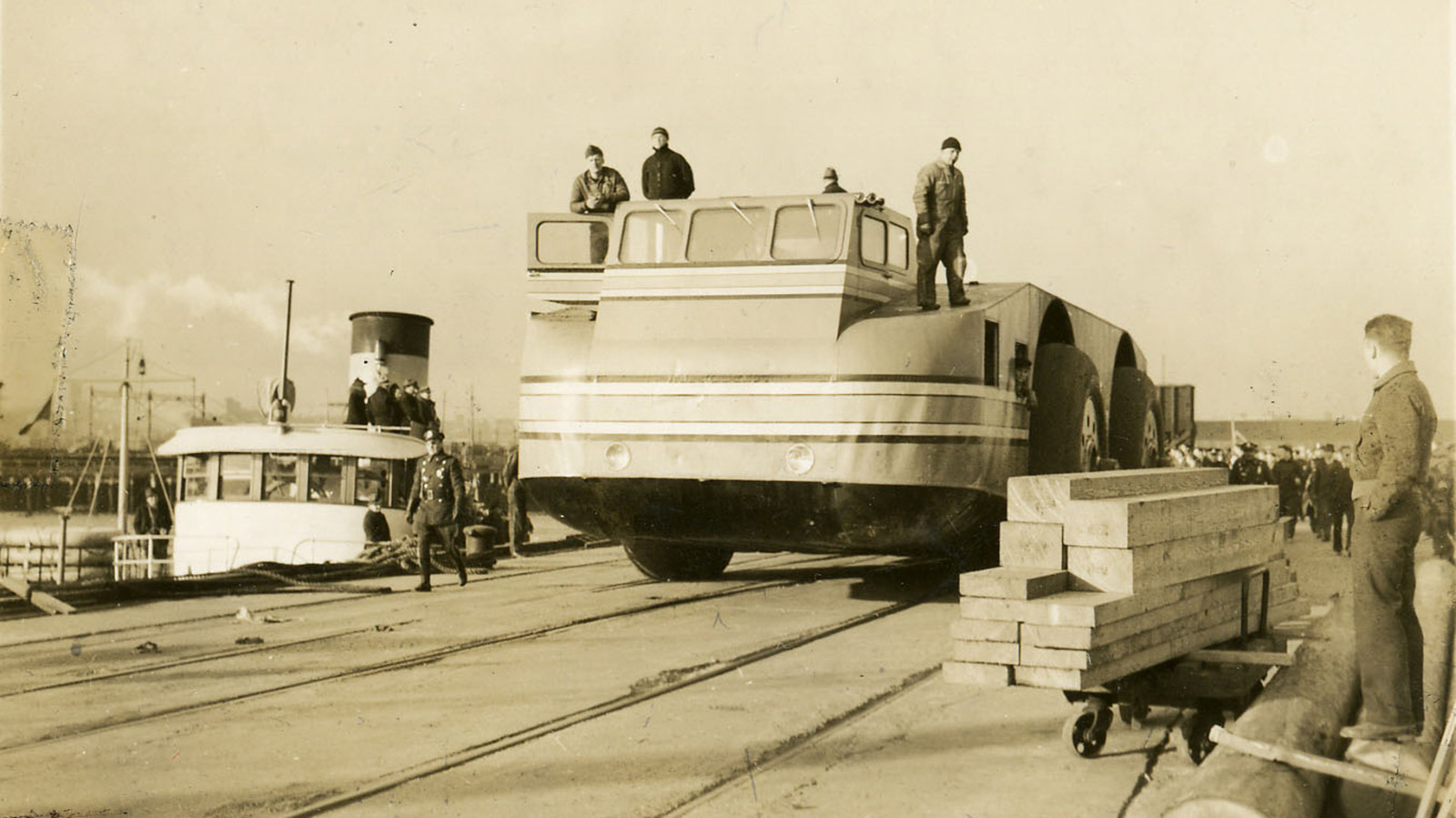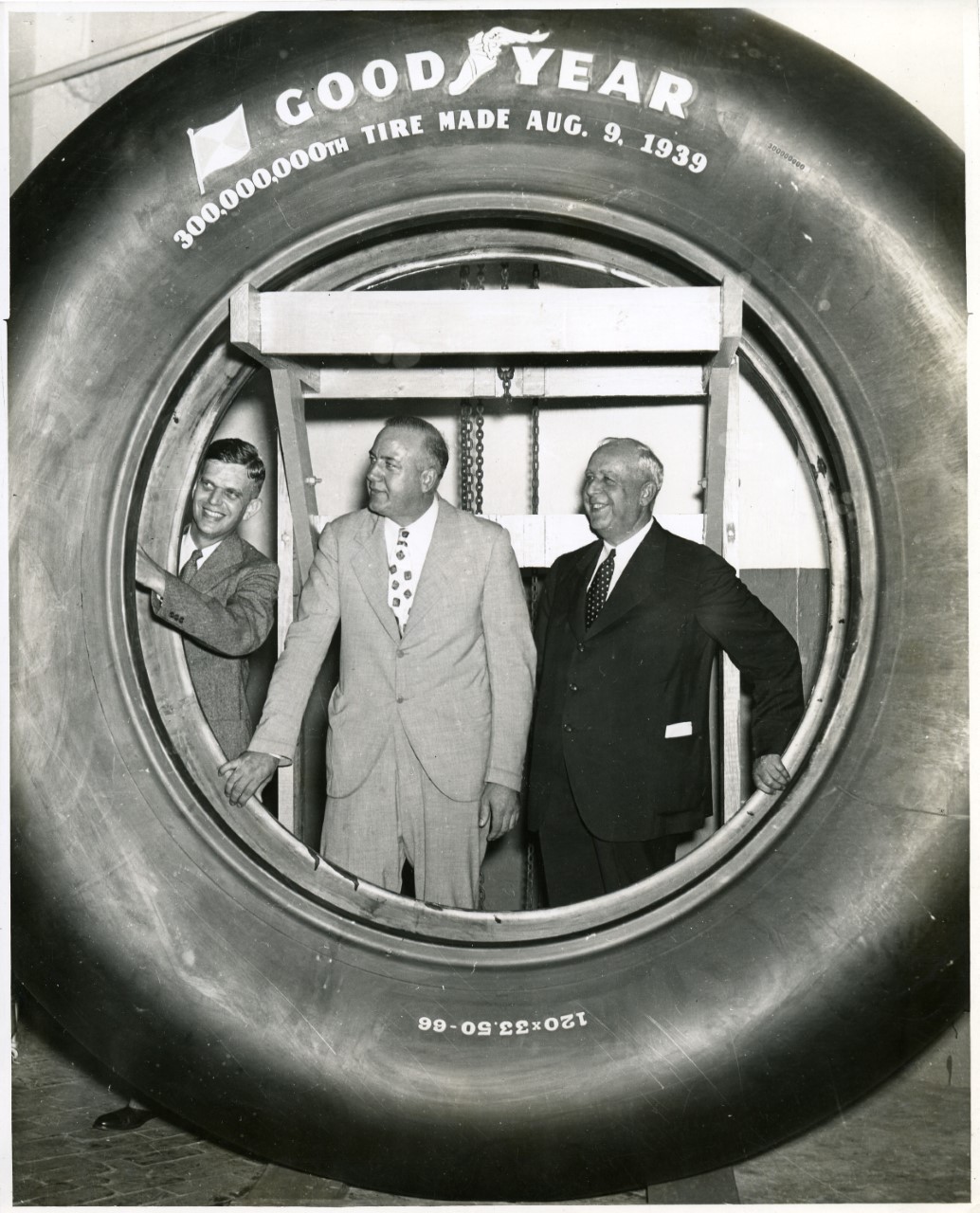— HISTORY CORNER —
What was Byrd's infamous Antarctic Snow Cruiser doing in Gomer, Ohio?
By Misa Norris

In 1939, the U.S. government re-entered exploration of Antarctica for the first time in almost 100 years, under the direction of President Roosevelt.[1] The team was led by Richard E. Byrd, who was embarking on his third Antarctic expedition. The timing of the journey remained critical as tensions increased leading up to WWII. There were reports in 1938 that a German team was staking out territory that accessed shipping lanes near Cape Horn under the guise of scientific research.[1] To combat a potential Nazi base in the south, Admiral Byrd was sent to claim 675,000 miles of Antarctic land for the US.[1] But in order to survive in the subzero temperatures and extreme conditions, the team needed a vehicle that could withstand the climate.
Dr. Thomas Poulter, another experienced explorer, and the Research Foundation of Armour Institute Technology in Chicago worked together to create the Snow Cruiser which was “built for $150,000 (at a time when a Ford sedan cost about $800).”[1] The enormous vehicle was “sixty feet long, fifteen feet wide, sixteen feet high … [and] weighed nearly forty tons.[2] It featured tires ten feet in diameter, a body made of HI-STEEL (to withstand extreme temperatures), and its custom-made red/orange paint made by Armstrong Paint and Varnish Works to contrast with the glare of the Antarctic snow.[3] From his experience on past expeditions, Dr. Poulter knew that the Snow Cruiser needed to be able to navigate ice crevasses, adapt to high altitudes, and house a plane in case of emergency. For that reason, the vehicle was equipped with the precise dimensions and technology to cross ice crevasses and provide its occupants with warmth. Over the course of eight months, the Snow Cruiser was assembled at Pullman Standard in Chicago.


After test runs performed by Dr. Poulter, the Snow Cruiser was ready to journey from Chicago to Boston by road before traveling by ship to Antarctica. The massive Antarctic machine had difficulty traveling on city roads not meant to accommodate a forty-ton vehicle. In Indiana, the Snow Cruiser sideswiped a truck on the road. There was minimal physical damage to the Snow Cruiser but it marked a shift in public opinion of the machine. The Snow Cruiser was nicknamed “The Igloo on Wheels”, “The Thing”, “The Penguin”, and a disappointment.[2] The incident resulted in the team falling behind schedule to do repairs but was not the last setback they encountered. Later in Ohio, the Snow Cruiser swerved out of control and landed nose first into Pike Run Creek where an estimated 125,000 people came to witness the accident.[4] One of the seven crew members recounted falling fifteen feet to the ground from the tailgate from the initial jolt.[5] The mishaps instilled serious doubt in the capabilities of the Snow Cruiser.
Finally, the team arrived in Boston where 70,000 people awaited the arrival of the Snow Cruiser in hopes of catching sight of it before being loaded onto the expedition ship North Star.[4] After a long journey, the Snow Cruiser safely landed in Antarctica ready to be put to the ultimate test. Quickly after arrival, the team realized that the vehicle was too heavy to drive on the snow. Each time it was driven, the Snow Cruiser got stuck and needed to be maneuvered out. In one attempt, “it took 15 hours to move 1.5km.”[2] Before leaving Chicago, Dr. Poulter had run successful trials in low-temperature sand believing that it simulated snow. He realized far too late that sand is heavier than snow. The mistake was enough to render the Snow Cruiser unusable for travel. Eventually, the team settled on using the vehicle as stationary housing in their camp, Little America III. Due to the war, Admiral Byrd was called back to the US before the expedition ended. When the team also returned home, they left the Snow Cruiser at the camp. It was rediscovered in the 1950s by another expedition. However, its exact current location is unknown. It is believed that the ice shelf it rested on broke off and drifted out to sea in the 1960s where it slowly sank into the Southern Ocean.[6] It is likely that the Snow Cruiser now rests at the bottom of the sea.
For more information on the Snow Cruiser’s journey visit the Byrd Polar and Climate Research Center Archival Program.

Footnotes
[1] Freitag, D.R., Dibber, J.S. (1986). Dr. Poulter’s Antarctic Snow Cruiser. Polar Record, 23(143), 129-141.
[2] Breig, J. (2016, February/March). Polar Opposites: James Breig Looks at the Antarctic Behemoth Versus Admiral Byrd. History Magazine, 36-39.
[3] Schreiber, A. (ND). The Snow Cruiser: The Story of its Conception and Construction and the Part it will Play in the Expedition of the United States Antarctic Service. Research Foundation of Armour Institute of Technology.
[4] Ray D. Gottfried "Photo Story of the Snow Cruiser" Scrapbook, SPEC.PA.56.0223, Byrd Polar and Climate Research Center Archival Program, The Ohio State University
[5] The Ohio State University. (1939, December). Vacation on Snow Cruiser. The Ohio State University Monthly, 3(31), 11-12.
[6] Scambos, T., Novak, C. (2005). On the Current Location of the Byrd ‘Snow Cruiser’ and other Artifacts from Little America I, II, III and Fraheim. Polar Geography, 1-24.
